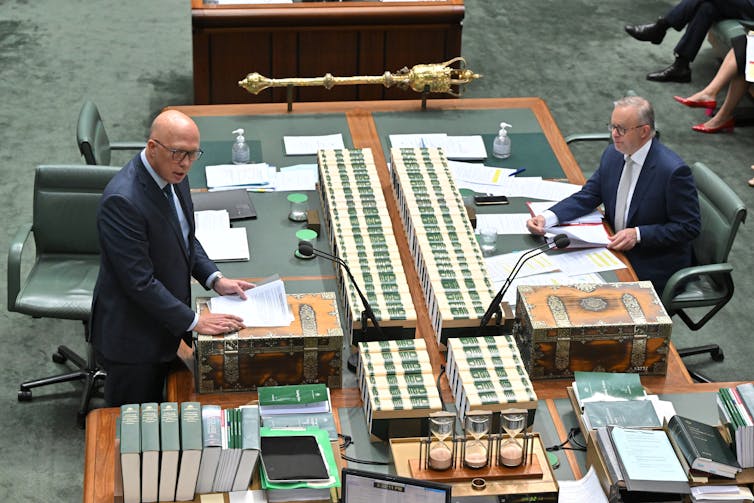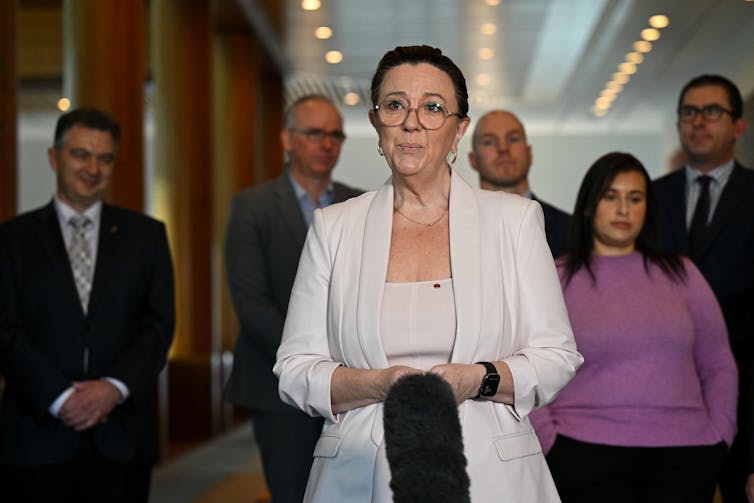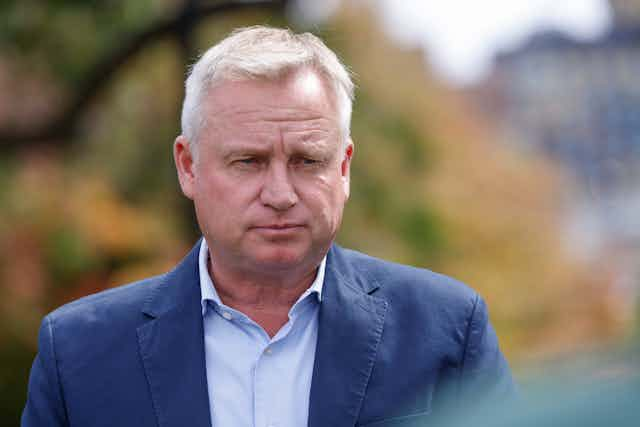At the March 23 Tasmanian state election, the Liberals won 14 of the 35 lower house seats, Labor ten, the Greens five, the Jacqui Lambie Network (JLN) three and independents three. This leaves the Liberals four short of the 18 needed for a majority.
The independents are the re-elected left-wing Kristie Johnston, former Labor MP David O'Byrne and anti-salmon farm campaigner Craig Garland.
Before the distribution of preferences began after the postal receipt deadline passed last Tuesday, the Liberals had been expected to win 15 seats, but lost a seat to Garland in Braddon.
This means the JLN alone is not sufficient to get the 18 votes needed for a majority. The Liberals will need JLN and at least one independent, but all three independents have some left-wing views. Labor has already conceded the election.
At the 2021 election, the Liberals had won 13 of the then 25 seats, Labor nine, the Greens two and an independent one, for a bare Liberal majority. In May 2023, two Liberal MPs had defected to the crossbench and eventually caused this early election; neither was re-elected.
Tasmania uses five electorates that each return seven members. The quota for election is one-eighth of the vote, or 12.5%. I previously explained the Hare-Clark system that is used in Tasmanian elections.
Read more: Liberals will win most seats in Tasmanian election, but be short of a majority
Electors vote for candidates, not parties, and this results in parties losing votes to leakage when their candidates are either elected (resulting in a surplus that needs to be distributed) or excluded. In contrast, lone independents cannot leak, but just gain votes during the distribution of preferences process.
The most interesting electorate was Braddon, where the Liberals started with 3.65 quotas, Labor 1.97, the JLN 0.91, the Greens 0.52 and Garland 0.40. But leakage from both the Liberals and Greens helped Garland to win the final Braddon seat. He had 0.64 quotas to 0.56 for the Greens when the Greens were excluded, and defeated the fourth Liberal by 0.88 quotas to 0.73.
In Franklin, the Liberals had started with 2.72 quotas, Labor 2.18, the Greens 1.58, the JLN 0.38 and O'Byrne 0.70. The Liberals won the final seat by 0.89 quotas to 0.76 for the Greens, with many left-wing votes going to O'Byrne, who made it to a full quota.
In Lyons, the Liberals started with 3.00 quotas, Labor 2.62, the Greens 0.86 and the JLN 0.66. Preferences from mostly right-wing others gave the JLN an easy win, as they finished with 0.96 quotas, to 0.93 for the Greens and 0.63 for Labor’s third candidate. The JLN and the Greens were elected to the final two seats.
Final statewide vote shares were 36.7% Liberals (down 12.1% since the 2021 election), 29.0% Labor (up 0.8%), 13.9% Greens (up 1.5%), 6.7% JLN (new), 8.0% independents (up 2.9%) and 5.7% others (up 0.2%).
There were two polls from uComms and Freshwater taken about a fortnight before the election that had Labor at about 23%. There were no late Tasmanian polls. There may have been late movement to Labor and against independents in the final two weeks, or the polls may have understated Labor’s support.
Federal YouGov poll: 51–49 to Labor
A national YouGov poll, conducted March 22–27 from a sample of 1,513, gave Labor a 51–49 lead, a one-point gain for the Coalition since the previous YouGov poll in early March. Primary votes were 38% Coalition (up one), 32% Labor (steady), 13% Greens (down two), 7% One Nation (up one) and 10% for all Others (steady).
After jumping ten points in the previous poll, Albanese’s net approval dropped five points to -11, with 52% dissatisfied and 41% satisfied. Dutton’s net approval slipped one point to -11. Albanese led Dutton as preferred PM by 46–34, down from 48–34 previously.
Asked what aspect of Easter was most important, 37% said time off work, 27% celebrating the death and resurrection of Christ, 18% Easter eggs and 17% hot cross buns.

Newspoll aggregate data for January to March
The Australian released aggregate data on March 31 for the three Newspolls taken from late January to late March, from a combined sample size of 3,691. The Poll Bludger reported the biggest change in the state breakdowns from the November to December period was a slump for Labor in Western Australia from a 54–46 lead to a 51–49 deficit.
There were two other five-point movements against Labor in demographic breakdowns, with Labor’s lead among voters aged 18 to 34 narrowing from 66–34 to 61–39, and their lead with non-English speakers narrowing from 60–40 to 55–45.
Education breakdowns had Labor losing three points with no tertiary education voters to fall to a 50–50 tie, but gaining a point with the university educated to lead 55–45, while the TAFE educated remained at a 50–50 tie.
Morgan poll and additional Resolve questions
A national Morgan poll, conducted March 25–31 from a sample of 1,677, gave Labor a 51–49 lead, a one-point gain for Labor since the previous week. Primary votes were 37.5% Coalition (down 0.5), 30% Labor (down 1.5), 15.5% Greens (up 1.5), 3.5% One Nation (down one), 9% independents (up 1.5) and 4.5% others (steady).
This is the highest support for the Greens in a Morgan poll since September 2023.
I previously covered the late March Resolve federal poll for Nine newspapers. In additional questions, 57% said there had been a rise in racism and religious intolerance as a result of the Israel-Gaza conflict, while 15% said there had not. By 56–19, respondents thought Australia needed stronger laws to ban hate speech on the basis of religion and faith.
By 74–4, respondents supported prosecuting those who engage in the malicious publication of private information online (“doxxing”) under a new federal criminal law.

Tammy Tyrrell quits JLN
On March 28, Tasmanian senator Tammy Tyrrell resigned from the Jacqui Lambie Network, but will remain a senator, sitting as an independent. This means Lambie herself is now the only JLN senator.
Tyrrell was elected in 2022, so her term does not end until June 2028 unless there is a double dissolution. Lidia Thorpe, who resigned from the Greens in February 2023, also has a term that ends in June 2028.

